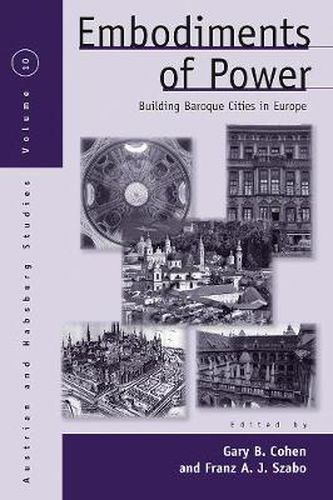Readings Newsletter
Become a Readings Member to make your shopping experience even easier.
Sign in or sign up for free!
You’re not far away from qualifying for FREE standard shipping within Australia
You’ve qualified for FREE standard shipping within Australia
The cart is loading…






This title is printed to order. This book may have been self-published. If so, we cannot guarantee the quality of the content. In the main most books will have gone through the editing process however some may not. We therefore suggest that you be aware of this before ordering this book. If in doubt check either the author or publisher’s details as we are unable to accept any returns unless they are faulty. Please contact us if you have any questions.
The period of the baroque (late sixteenth to mid-eighteenth centuries) saw extensive reconfiguration of European cities and their public spaces. Yet, this transformation cannot be limited merely to signifying a style of art, architecture, and decor. Rather, the dynamism, emotionality, and potential for grandeur that were inherent in the baroque style developed in close interaction with the need and desire of post-Reformation Europeans to find visual expression for the new political, confessional, and societal realities. Highly illustrated, this volume examines these complex interrelationships among architecture and art, power, religion, and society from a wide range of viewpoints and localities. From Krakow to Madrid and from Naples to Dresden, cities were reconfigured visually as well as politically and socially. Power, in both its political and architectural guises, had to be negotiated among constituents ranging from monarchs and high churchmen to ordinary citizens. Within this process, both rulers and ruled were transformed: Europe left behind the last vestiges of the medieval and arrived on the threshold of the modern.
$9.00 standard shipping within Australia
FREE standard shipping within Australia for orders over $100.00
Express & International shipping calculated at checkout
This title is printed to order. This book may have been self-published. If so, we cannot guarantee the quality of the content. In the main most books will have gone through the editing process however some may not. We therefore suggest that you be aware of this before ordering this book. If in doubt check either the author or publisher’s details as we are unable to accept any returns unless they are faulty. Please contact us if you have any questions.
The period of the baroque (late sixteenth to mid-eighteenth centuries) saw extensive reconfiguration of European cities and their public spaces. Yet, this transformation cannot be limited merely to signifying a style of art, architecture, and decor. Rather, the dynamism, emotionality, and potential for grandeur that were inherent in the baroque style developed in close interaction with the need and desire of post-Reformation Europeans to find visual expression for the new political, confessional, and societal realities. Highly illustrated, this volume examines these complex interrelationships among architecture and art, power, religion, and society from a wide range of viewpoints and localities. From Krakow to Madrid and from Naples to Dresden, cities were reconfigured visually as well as politically and socially. Power, in both its political and architectural guises, had to be negotiated among constituents ranging from monarchs and high churchmen to ordinary citizens. Within this process, both rulers and ruled were transformed: Europe left behind the last vestiges of the medieval and arrived on the threshold of the modern.